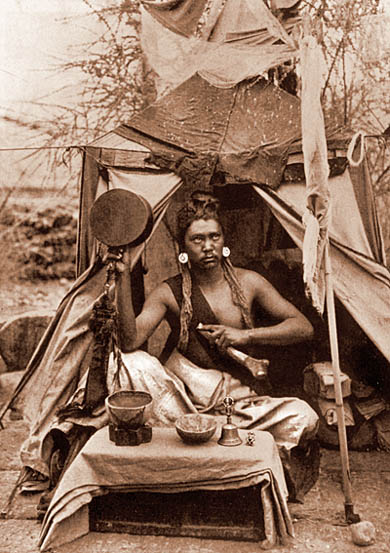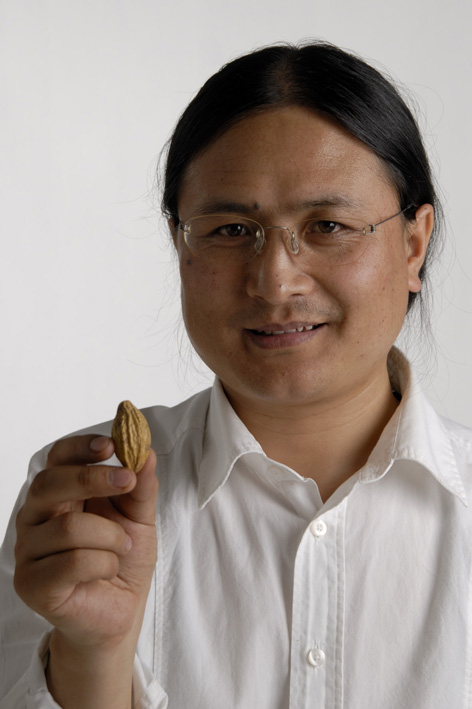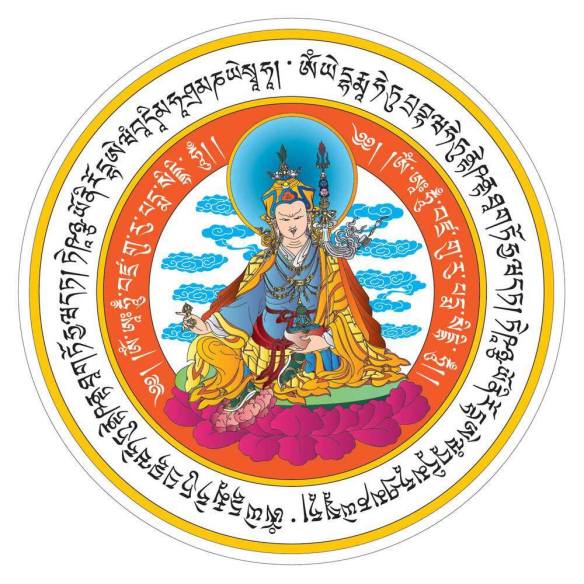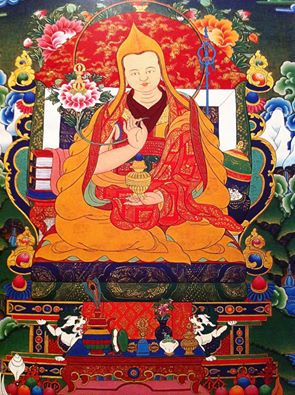
The following is a rough translation of a spooky Tibetan story that was shared on the popular Tibetan-medium site Khabdha. It tells the tale of three ngakpa – non-monastic, non-celibate tantric yogi sorcercers – who engage in the special exorcistic meditation of Chöd, and end up encountering a very dangerous demoness (more specifically, a yakshini or alluring female nature spirit, associated with the granting of power, riches, and sickness). I hope you will read it and be careful the next time you are practicing yoga in the wilderness!
Besides being quite chilling and engaging, the story is also noteworthy for other reasons. It reminds us for one, how Tibetan Buddhist yoga is a lot more human thigh-bone trumpet and visions of demons than Lulu Lemon, coconut water and gym memberships, and points to the awe and fear with which the Tibetan practice of Chöd – particularly in its solitary, and itinerant iterations – continues to be held. As part of the Chöd (gcod) or ‘severance/cutting’ offering rite practitioners visit terrifying, haunted locations, where, through complex ritual choreographies of visualization, liturgy-singing, dancing, and drumming, they work with the energy of their fear of annihilation by meditatively disengaging from their body, severing their investment in a constructed self, and offering their ‘corpse’ up to be eaten by beneficent as well as hungry, suffering demonic beings, which they have summoned. As I mention in another post about the practice, gcod not only pacifies these demons – themselves ultimately displays of Mind and a product of self-grasping like all phenomena – but also powerfully severs the practitioner’s attachment to their self-importance and allows them to develop profound compassion, generosity and fearlessness.
The story below is noteworthy, however, for how it reminds us that just because spirits are empty, illusory displays from the vantage-pointless vantage-point of ultimate non-dual reality, that does not mean that they do not appear to be real at the conventional level, and do not act in the world of apparent phenomena (after all, your and my own sense of self is likewise an ultimately empty, illusory display but many people still take your and my actions in the world pretty seriously). Chöd (and the story below!) is thus interesting for how, on one level, it is a teaching about the ultimate non-reality of demons, of all those terrifying projections that haunt us, but on another, serves to demonstrate just how potent and devastating, how perilous, those demons can be. On a separate note, with its descriptions of the three brothers’ divvying up of familial and religious duties, the story that follows also provides some small insight into ngakpas’ time-management strategies, and the everyday familial, socio-economic dimensions of Tibetan yogic practice.
Here follows the translation:
A story of how three Chodpa exorcists tamed a Yakshini [i.e. Female ‘Harm-Giver’ or local land spirit (gnod sbyin mo)] – By Tenpai Nyima Continue reading →







